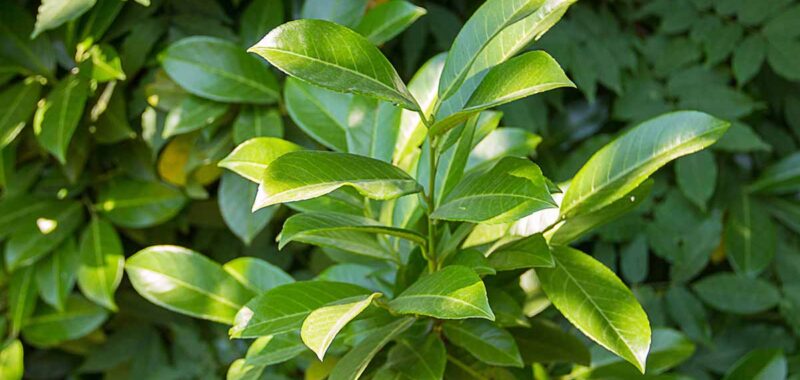Despite what the haters say about bay leaves (Laurus nobilis) having little to no impact on the flavor of the recipes they’re used in, this classic cooking herb plays an important role in developing layered flavor.
I think those who can’t taste the impact are just using old, flavorless leaves that have been sitting in the cupboard too long.
Bay leaves are used whole in cooking because they can be too pungent when crushed or broken.
Go ahead, snap one in half and take a whiff. Imagine that herbaceous eucalyptus scent overpowering your dish. Bay is meant to add subtle flavor. It shouldn’t shout.
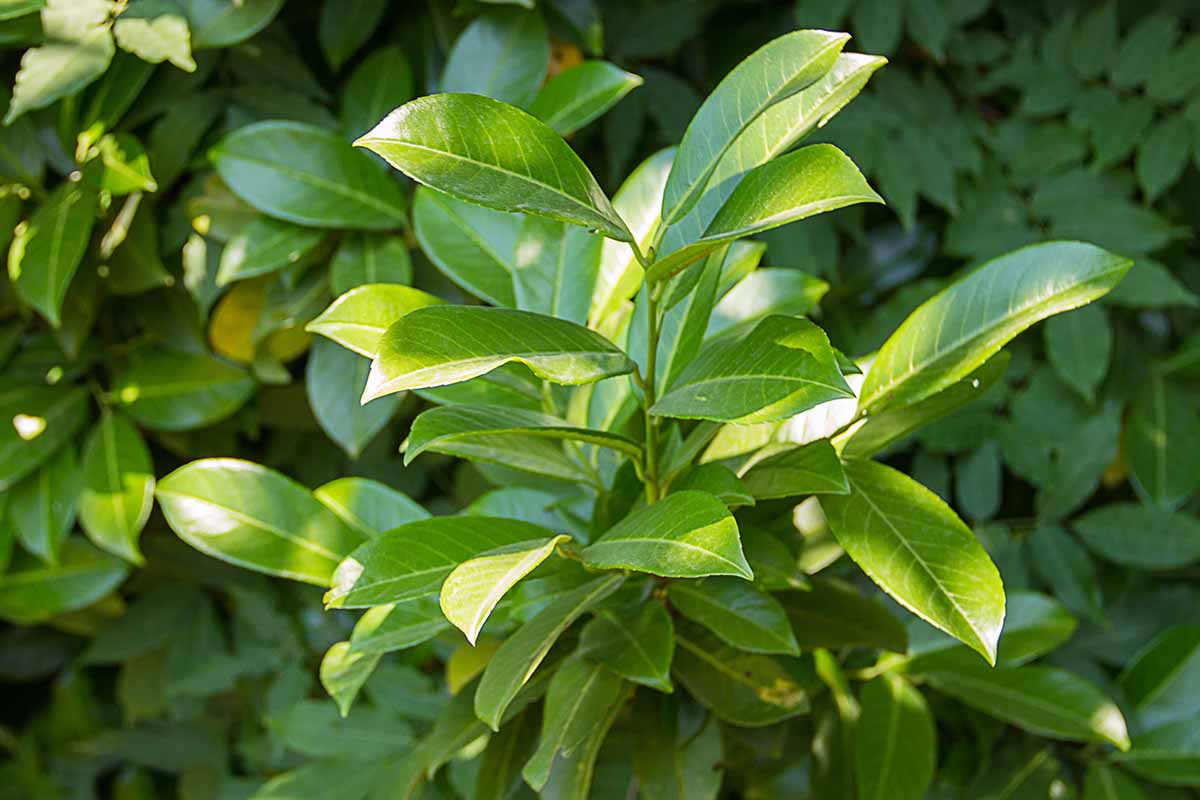

We link to vendors to help you find relevant products. If you buy from one of our links, we may earn a commission.
The most pungent flavor comes from when you use freshly harvested foliage.
They lose their flavor the longer they sit in storage – hence the complaints about adding no flavor – so having access to fresh ones is a treat and the best way to experience what this herb truly offers.
In our guide to growing bay laurel, we discuss how to cultivate these trees in your garden.
If you have your own supply that you want to harvest and use, but you’re not sure how to go about it, this guide can help.
We’ll discuss the following to bring out the best in your bay:
How to Harvest Bay Leaves
Before you can start plucking the leaves and using them, you have to know when to start working. Let’s cover that, first.
When to Harvest
If you plan to use the bay leaves fresh, you can harvest any time. Otherwise, you can dry small batches throughout the year and use them right away.
How many you can take at once depends on how large your plant is. You never want to harvest more than 10 percent of the foliage at any one time.


If you have a large bush, that means throughout the year, you can pretty much take as many as you can use in a small household.
Avoid harvesting in the winter, though a few here and there won’t hurt the plant.
If you want to dry a bunch all at once so you can sell or give them away, or just so that you don’t have to worry about having a ready supply, it’s best to harvest in the peak of summer when the shrub is at its peak.
If you have a choice, you should always wait to harvest in the height of summer. That’s when the foliage has the highest essential oil content and, as a result, the strongest flavor.
Which Leaves Are Best?
Bay trees send out new foliage throughout the spring, summer, and fall, with most of the leaves emerging in the spring.
These will be smaller, softer, and brighter green than the mature ones. Don’t harvest these young leaves, you want the older ones, which should be larger, darker green, and firmer than the young ones.
Avoid harvesting any bay foliage that is damaged, eaten by insects, or discolored.
For the most pungent flavor, you want to harvest the mature leaves in summer when the essential oil content is at its peak.
How to Harvest
There are two ways to harvest from your bay. The first is to simply pluck them off using your fingers. This is best if you are only taking a few leaves here and there.
Otherwise, use a clean pair of scissors and neatly trim them off near the stem. You don’t want to let any part of the leaf remain, so take it off as close to the stem as you can, whether you are plucking or cutting.
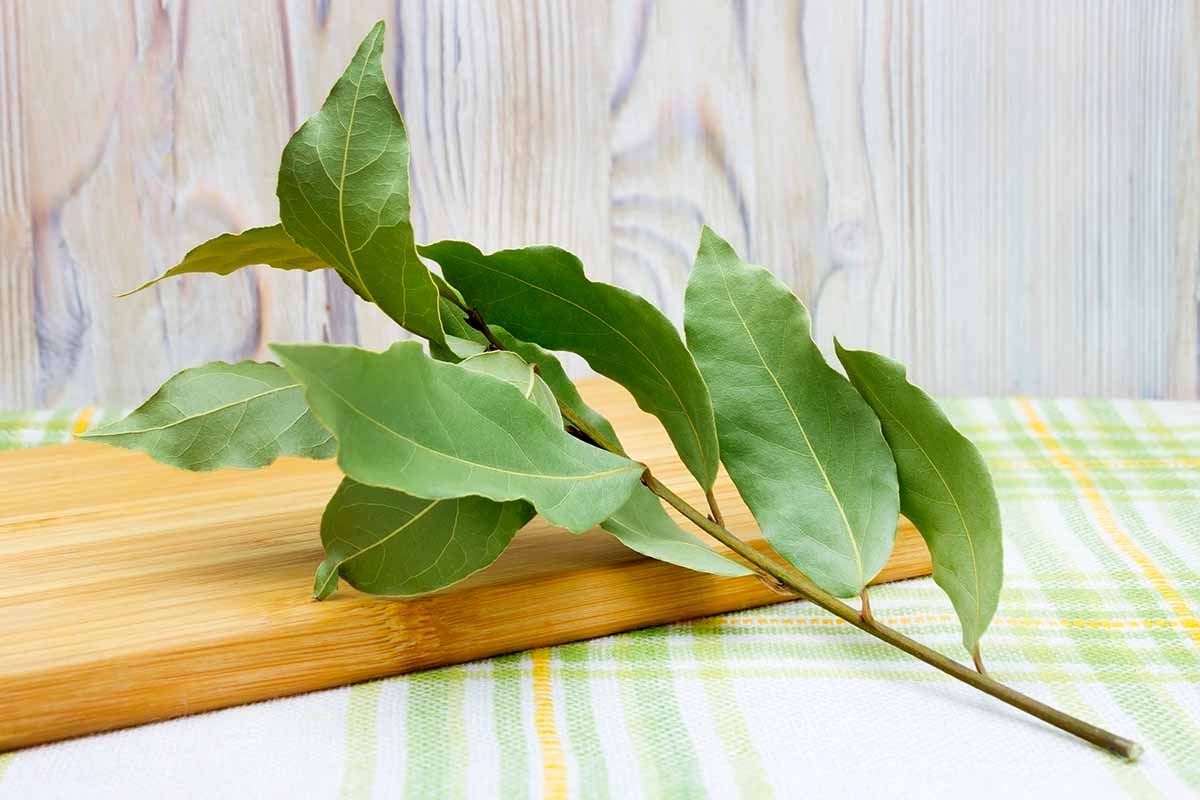

If you have a large shrub, you can take off small branches instead of harvesting individual leaves.
The advantage of harvesting branches is that you can hang them in bundles to dry.
The disadvantage is that you will also likely have some young leaves on the branch which won’t taste so good, and you’ll want to just pluck those off and toss them out.
Use a sharp pair of pruners to cut off the branch as close to the nearest branch or stem as you can.
Fresh or Dry?
It’s awesome having access to fresh bay, but the leaves can be somewhat bitter. The best flavor emerges when they are fresh but dried.
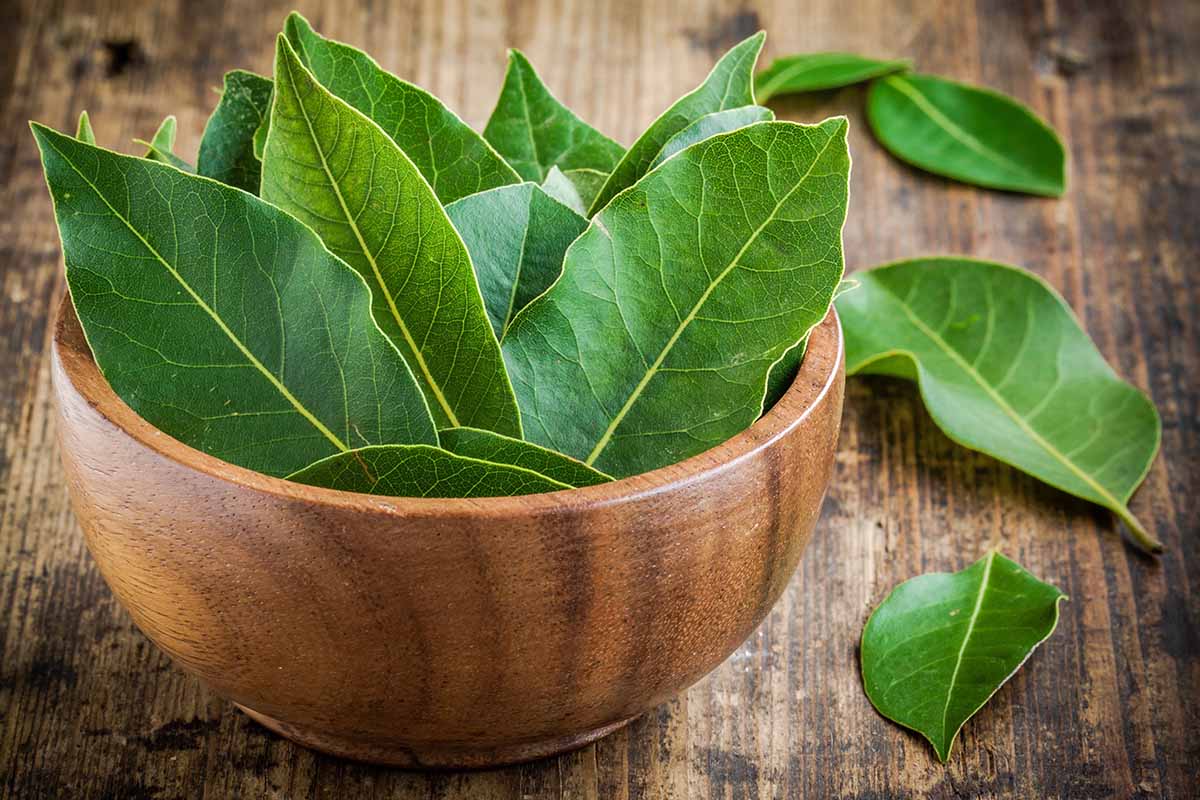

The ones you buy in the store might be months (or years) old, so it can be revelatory using fresh foliage dried right off the tree.
Feel free to experiment with fresh leaves and see what you think. Some people prefer the stronger flavor in some dishes, myself included. When you need a more mellow but complex flavor, dried is the way to go.
The fresh foliage has more of a eucalyptus, licorice flavor, while dried leaves settle into a mellow, herbal flavor that has the same notes as thyme and oregano.
Let’s talk about how to dry leaves.
How to Dry Bay Leaves
Once you’ve harvested the foliage, give it a rinse and let it dry.
The easiest method for drying a small batch is to set them in a single layer on a plate or baking sheet on top of paper towels.
Lay paper towels on top and set them aside in a cool, dark area. Check every few days to see if there is any mildew forming. If so, toss those with mildew and spread the remaining ones out a bit more. Flip them after a week. They should be dried and ready to use in two weeks.
You can also use a dehydrator to speed up the process. Follow the manufacturer’s directions for drying herbs. Typically, this means drying at a temperature of around 95°F for one or two hours.
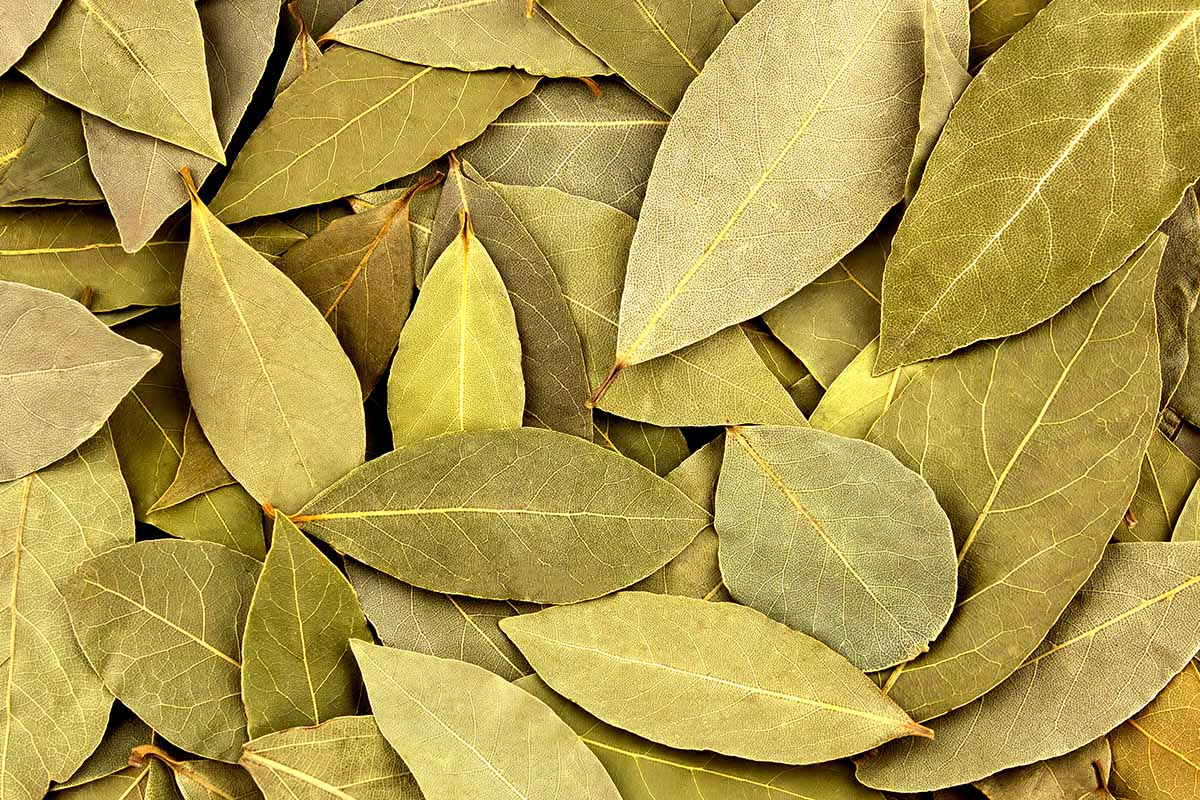

After an hour or so, check the leaves and look for any green, pliable areas. If you see any, keep drying. They should be crisp and grayish-brown when they are ready.
If you don’t have a dehydrator, you can also use your oven. Turn it on to a bake setting at the lowest temperature and place a single layer of leaves on a baking sheet.
Bake them for an hour, flipping them every 20 minutes and checking for dryness.
If you harvested branches, strip off the lowest leaves and remove any young, bright green foliage. Tie the branches together at the base and hang them upside down in a cool, dry area out of sunlight to dry.
Store the whole, dried bay leaves in an airtight container, whether that’s a baggie or a glass jar, in a cool, dark area. They retain their flavor for up to a year. Yes, they’ll continue to look fine for a lot longer than a year, but they lose most of their flavor so toss them out or use them up.
A Bay-Youtiful Harvest!
Because it can be hard to tell how old the leaves are in the jars you buy at the grocery store, not to mention how expensive they can be, having access to fresh foliage is awesome.
Now tell me, how do you like to use your bay? What’s your favorite recipe? Share in the comments!
Hopefully this guide helped you figure out when to harvest the foliage and how to dry it out.
And if you want more information about growing bay laurel in your garden, check out these guides next:

